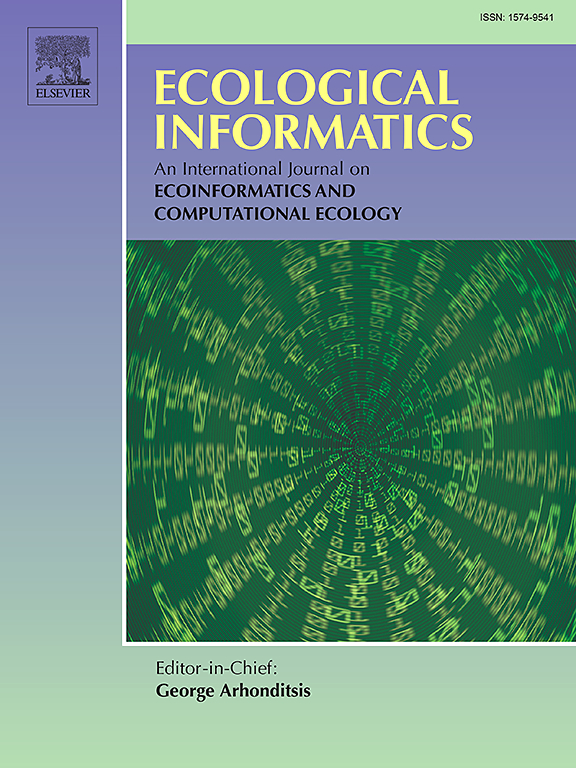AlgAlert: A two-level approach for algae bloom prediction using deep learning
IF 7.3
2区 环境科学与生态学
Q1 ECOLOGY
引用次数: 0
Abstract
Chlorophyll-a (Chl-a) is essential to detect harmful algae blooms that can damage aquatic ecosystems and cause economic losses. Consequently, governmental agencies and research institutions invest significant effort into monitoring water quality and developing management strategies for aquatic systems. With the increasing availability of real-time water quality, meteorological and tidal sensor data, there is growing potential to harness this information through data-driven approaches such as machine learning to support aquatic systems management. This study presents a comprehensive data-driven framework named AlgaAlert that integrates a regression model to forecast Chl-a concentrations and a classification model to predict the occurrence of blooms in a temperate estuarine system. The framework was developed by benchmarking multiple algorithms and selecting the best-performing regression and classification models for integration. The model evaluation was based on hourly water quality and meteorological data collected from early December 2019 to mid-January 2020 from the Kwilena monitoring site, the South Perth meteorological station, and a tidal gauge on Barrack Street, Perth, Australia. The AlgAlert framework combines K-Nearest-Neighbours Regression (KNN) regression to predict Chl-a levels with a custom classifier to determine bloom or no-bloom conditions based on labelled time-series data. KNN demonstrated superior regression performance, achieving 0.25 MAE, outperforming other models like random forest (RF). Classification results revealed nearly perfect F1-scores, indicating that the model accurately identified bloom events with few missed or false alarms (0.99 for no-bloom and 0.98 for bloom). This demonstrates AlgAlert’s robust predictive capabilities, offering a reliable tool to support timely decision-making in water quality management.
AlgAlert:使用深度学习进行藻华预测的两级方法
叶绿素-a (Chl-a)是检测有害藻华所必需的,这些藻华会破坏水生生态系统并造成经济损失。因此,政府机构和研究机构在监测水质和制定水生系统管理战略方面投入了大量努力。随着实时水质、气象和潮汐传感器数据的可用性越来越高,通过数据驱动的方法(如机器学习)利用这些信息来支持水生系统管理的潜力越来越大。本研究提出了一个名为AlgaAlert的综合数据驱动框架,该框架集成了预测Chl-a浓度的回归模型和预测温带河口系统水华发生的分类模型。该框架是通过对多个算法进行基准测试并选择性能最佳的回归和分类模型进行集成而开发的。该模型评估基于2019年12月初至2020年1月中旬从Kwilena监测点、南珀斯气象站和澳大利亚珀斯巴拉克街的潮汐计收集的每小时水质和气象数据。AlgAlert框架结合了k -最近邻回归(KNN)回归来预测Chl-a水平,并结合了一个自定义分类器来确定基于标记时间序列数据的开花或不开花条件。KNN表现出优越的回归性能,达到0.25 MAE,优于随机森林(RF)等其他模型。分类结果显示接近完美的f1分数,表明该模型准确地识别了开花事件,几乎没有漏报或误报(无开花0.99,开花0.98)。这证明了AlgAlert强大的预测能力,为支持水质管理的及时决策提供了可靠的工具。
本文章由计算机程序翻译,如有差异,请以英文原文为准。
求助全文
约1分钟内获得全文
求助全文
来源期刊

Ecological Informatics
环境科学-生态学
CiteScore
8.30
自引率
11.80%
发文量
346
审稿时长
46 days
期刊介绍:
The journal Ecological Informatics is devoted to the publication of high quality, peer-reviewed articles on all aspects of computational ecology, data science and biogeography. The scope of the journal takes into account the data-intensive nature of ecology, the growing capacity of information technology to access, harness and leverage complex data as well as the critical need for informing sustainable management in view of global environmental and climate change.
The nature of the journal is interdisciplinary at the crossover between ecology and informatics. It focuses on novel concepts and techniques for image- and genome-based monitoring and interpretation, sensor- and multimedia-based data acquisition, internet-based data archiving and sharing, data assimilation, modelling and prediction of ecological data.
 求助内容:
求助内容: 应助结果提醒方式:
应助结果提醒方式:


